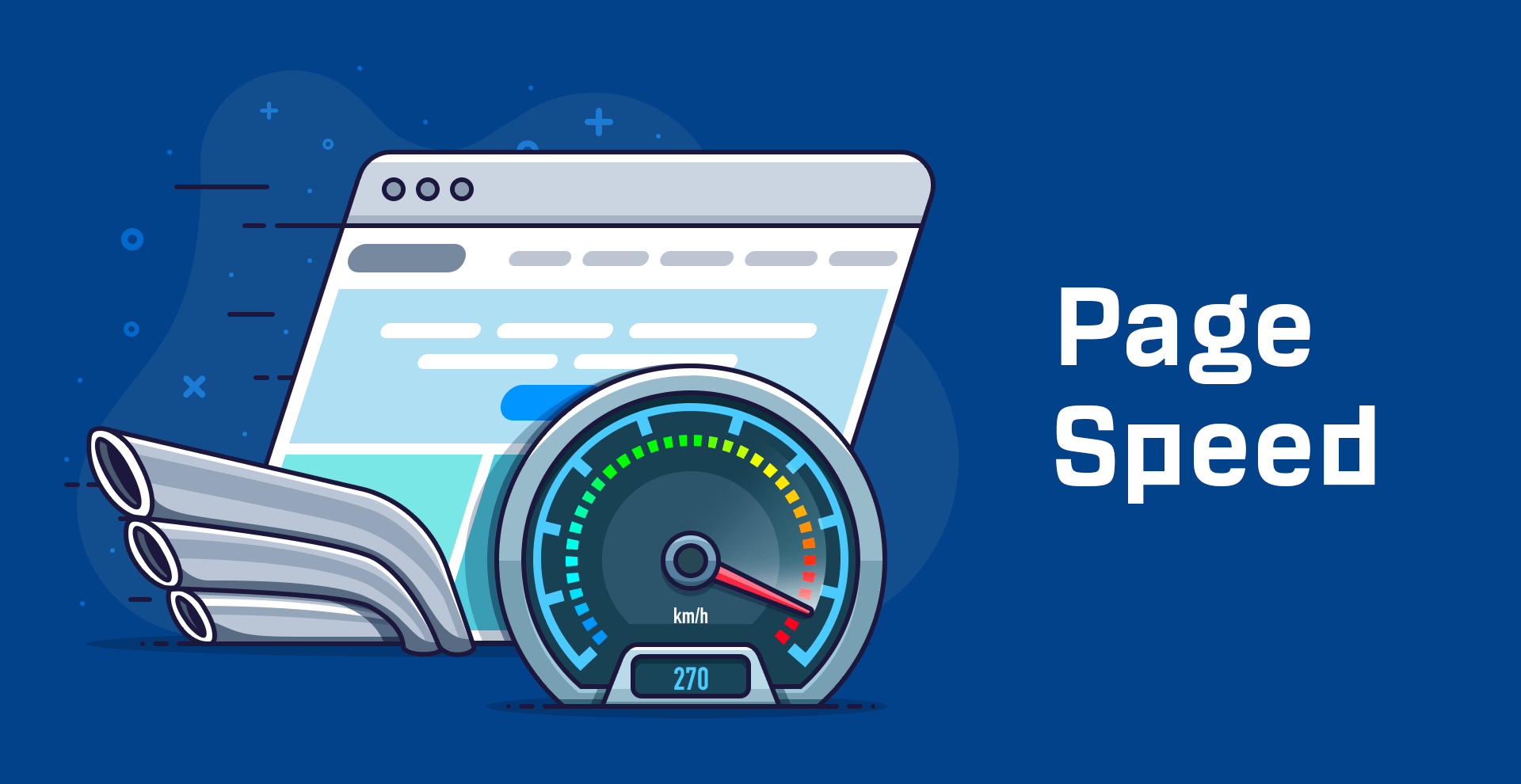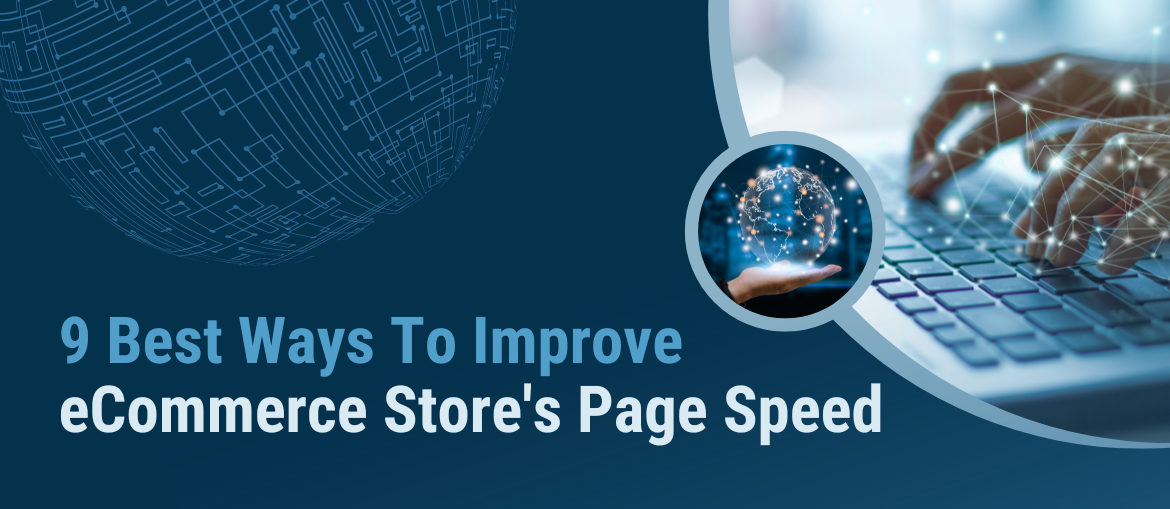Table of contents
In today’s fast-paced digital world, website users demand lightning-fast page speed. This is especially true for eCommerce stores, where every second of delay can result in lost sales and frustrated customers.
In fact, studies have shown that a one-second delay in website load time can lead to a 7% reduction in conversions, 11% fewer page views, and 16% decrease in customer satisfaction.
Therefore, optimizing your website performance can improve user experience, increase conversions, and boost SERP rankings.
In this blog, we will talk about the importance of page speed for eCommerce stores and provide 9 best practices to help you improve your website’s performance.
Importance of Improving Page Speed

The page loading time can directly affect 4 important eCommerce metrics as follows:
Bounce rate
A slow-loading website can lead to high bounce rates, as visitors will leave your site immediately and switch to a competitor’s site.
In fact, Businesswire’s study shows that 73% of users would abandon a slow-running website and go to a competitor. A research by Google shows that as page load time goes from 1 second to 3 seconds, the probability of bounce increases 32%.
Therefore, optimizing your performance can help reduce your bounce rate and retain visitors to your site.
SERP rankings
Google announced that they prioritize fast-loading websites in their search results.
According to a study by Wordstream, page speed is one of the top 10 ranking factors for Google.
Therefore, enhancing the loading speed can improve your website’s visibility in search engine results pages, driving more traffic to your site.
Sessions
A slow website can negatively impact the number of sessions or visits to your website.
According to Akamai’s report, an eCommerce store with a 2-second delay can reduce the session length by 51%, which affects badly on traffic, ranking, sales, and conversions.
Therefore, by improving your page speed, you can increase the session duration on your website and generate more opportunities for engagement and conversion.
Conversion rates
The most significant impact of loading speed on eCommerce businesses is on conversion rates.
According to a study from Unbounce, nearly 70% of customers admit that page speed impacts their decision to purchase from an eCommerce store.
Therefore, reducing the loading time can have a significant impact on your conversion rates and bottom line.
How to Test Your Loading Speed?
First, let’s find out if your website has any loading speed issues.
So in this section, we will guide you on how to use PageSpeed Insights to test your website’s speed and spot issues.
Page Speed Insights is provided by Google. It reports on the user experience of a webpage on both mobile and desktop devices and provides suggestions to improve the pag’s performance.
To use PageSpeed Insights, go to the link https://pagespeed.web.dev/.

Next, enter your page URL in the bar and click Analyze.
After running the analysis, it will show you a full report of your website’s mobile and desktop experience.

Then you can scroll down to see the diagnostics and suggestions to improve your performance, accessibility, best practices, and SEO.

9 Best Ways To Improve eCommerce Store’s Performance
We will divide these tips into 2 categories: optimize the frontend and the backend.
Frontend Optimization
Update frontend tech stack
The main concern of the frontend tech stack is creating a great user experience, smooth user interface, and straightforward internal structures.
However, Magento’s default frontend has low performance and outdated tech stack, which could bring your business down.
That’s why many new frontend solutions for Magento have been created to enhance your storefront, and the most prominent among them is the PWA technology.
PWA can significantly improve user experience on both mobile and desktop devices. It makes the website load faster and smoother while enabling some mobile-app functions like “push notifications” or “add to home screen.”
CLICK HERE to learn more about PWA!
Compress and optimize images

Images account for about 50% – 75% of your website’s total weight. However, images are indispensable for eCommerce stores, as customers rely heavily on them to make purchase decisions.
Though you can’t remove them, you can optimize them. For example, you can convert your images to the WeBP format to minimize image size without reducing quality.
Another solution is to use lazy load to only allow images to load when users scroll down the pages to reduce loading time.
Use lite embeds to add video
Video is dominating the internet. It can be used to entertain, learn new skills, and help make buying decisions.
But depending on how you embed videos on your website, it can cause big differences in load time.
The standard embed code from YouTube makes your website more bloated. That’s why you should use lite embeds. This solution enables you to only embeds the video’s thumbnail image, and the video player (and all its extra JavaScript) only loads when the user clicks on the thumbnail.
Backend Optimization
Select a fast and reliable web hosting

A significant part of your site’s loading time is covered by the Time To First Byte (TTFB), and your website hosting is primarily responsible for this.
Unfortunately, many businesses choose to purchase cheap hosting for their eCommerce stores, resulting in a slow website.
So when choosing your hosting platform, look out for the following:
- Memory/bandwidth limits for scaling during and seasonal promotions
- Projected traffic and peak user load to avoid crashes from a sudden spike in visitors
And you should ask your website provider to help you prepare for unexpected traffic spikes or an influx of orders before any major sales event.
Use a Content Delivery Network (CDN)
CDN (Content delivery network) is the distribution of servers containing your website content worldwide, so your global visitors can load your website smoothly by accessing the nearest server.
Since more eCommerce sites are going global, a CDN is a non-negotiable ingredient for platform performance.
Use browser caching

To optimize your store performance, you should use browser caching that helps browsers to store the most recent web pages on the server to load whenever users request to access the page easily.
Reduce HTTP Requests
Having lots of HTTP Requests can cause a slow page speed.
Some solutions to reduce HTTP requests are:
- Reduce redirects
- Remove all broken links
- Remove all the unnecessary elements and features
- Install necessary extensions only
Organize your tracking with Google Tag Manager
Collecting customer data is crucial for planning marketing strategies. But collecting that data can slow down your site performance. All those JavaScript tracking tags (general analytics, conversions, goals, behavioral retargeting, etc.) are often to blame.
Thus, the solution is to use a Tag Management System (TMS) like Google Tag Manager to condense all your tags into one JavaScript request.
Minify HTML, CSS & JavaScript
Large HTML codes, CSS, and JavaScript files will slow down your website, so it’s important to optimize these files and eliminate unnecessary lines of code to make the files smaller in size and easy to load.
PWA – The Best Solution To Improve Page Speed
A PWA (Progressive Web App) is a website that looks and behaves like a mobile app. It can offer an app-like browsing experience on mobile devices.
The PWA technology allows the website to store data in the user devices’ cache. As a result, it reduces the server’s response time, thus improving loading speed dramatically.
In fact, studies found that PWA can improve your website loading page, specifically your mobile loading page, by 2 to 4 times faster.
In case you want to take advantage of PWA technology for your Magento store, we would like to recommend you the best solution:
Siminia Theme by SimiCart

With Siminia, you can easily implement the headless PWA solution to your store. And Siminia Theme aims to be stable and easy to maintain, so you don’t need to worry about future Magento version upgrades.
Moreover, you can simply customize your storefront as this theme provides 90+ pre-built templates or drag-and-drop page elements to build your desired layout.
Better yet, you can install this theme for free. Only if you want to use more advanced features, then you would need to upgrade to higher pricing plans.
Conclusion
In this article, we have shown you all the tips and tricks to optimize the page speed of your store.
We hope this is helpful and good luck to you!




